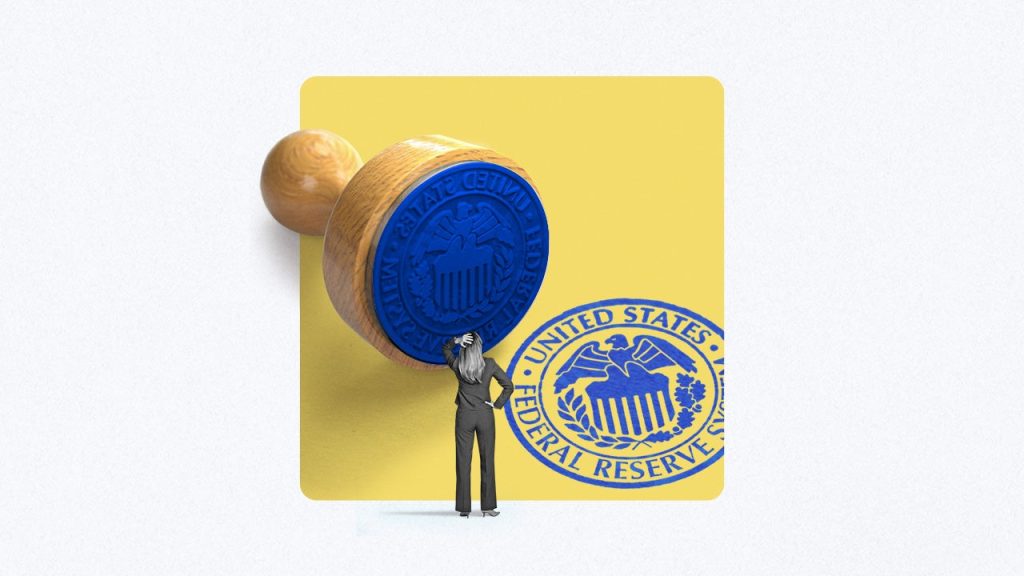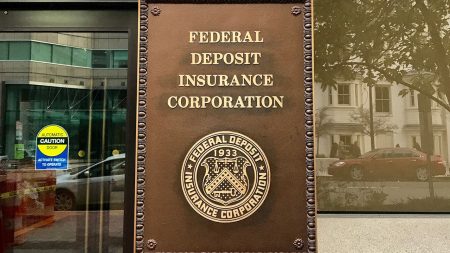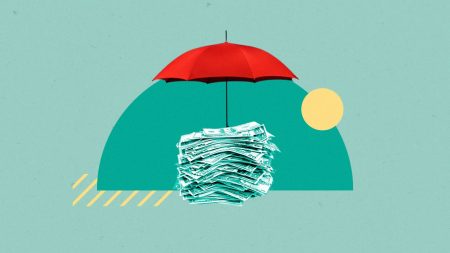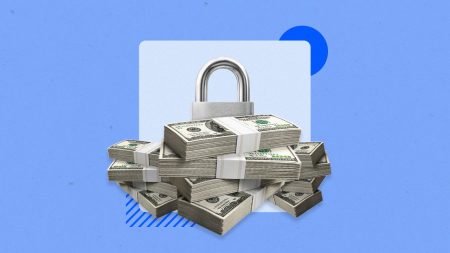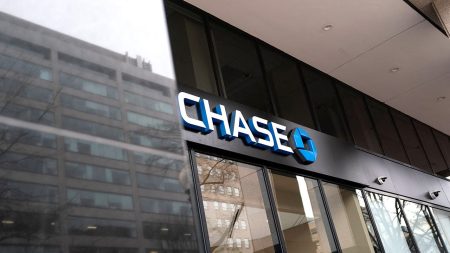Key takeaways
- The Federal Reserve’s interest-rate decisions have a wide-ranging influence on your personal finances, affecting more than just your financing costs but also your job security and purchasing power.
- When the Fed’s key interest rate falls (or rises), the borrowing costs you pay follow suit, influencing the cost of financing purchases with credit cards, car loans, personal loans and more.
- The Fed is expected to cut interest rates for the second straight meeting, a move aimed at protecting the job market. Officials, however, are still concerned about how tariffs could impact inflation.
Have you struggled to find a new job over the past few years? Did you job hop during the “Great Resignation” of workers in 2021? Did you buy a home when mortgage rates were at record lows in 2020? Did you job hop during the “Great Resignation” of workers in 2021? Have you been holding off on making a big-ticket purchase until you can find a cheaper deal and lower interest rate?
Believe it or not, those money moves — big and small – might be linked to what’s happening at the world’s most powerful central bank: the Federal Reserve.
From paychecks to savings accounts, nearly every dollar earned, spent or saved is touched in some way by the Fed’s decisions.
— Stephen Kates, CFP, Bankrate financial analyst
What does the Federal Reserve do?
The Federal Reserve is the central bank of the U.S., best known as the orchestrator of the world’s largest economy. The Fed has two primary economic goals — price stability and maximum employment — and it uses interest rates as its main lever to accomplish those outcomes.
The Fed’s rate-setting arm — the Federal Open Market Committee (FOMC) — (typically) meets eight times a year to either raise, lower or maintain a key benchmark interest rate that ripples through the entire economy: the federal funds rate.
How does the Federal Reserve impact me?
Put simply, the Fed’s interest rate decisions have a domino effect on almost all forms of borrowing. When rates fall (or rise), so, too, do borrowing costs on auto loans, credit cards, home equity lines of credit (HELOCs) and more. You may also see banks adjust the yields that they were previously offering on key products like savings accounts or certificates of deposit (CDs).
But the Fed’s decisions have other knock-on effects. For starters, cheaper borrowing costs can incentivize businesses to hire new workers or invest in new initiatives. Expensive rates, however, can cause both businesses and consumers to pull back on big-ticket purchases or hiring — worsening the job market.
The Fed lifted interest rates to a 23-year high throughout 2022 and 2023 to combat rapid, post-pandemic inflation. Then, a downturn in hiring in 2024 prompted them to cut interest rates a full percentage point. Officials spent much of 2025 on the sidelines, but they returned to cutting interest rates at their September meeting. They’re widely expected to lower borrowing costs again in October.
1. The Fed’s decisions influence your borrowing costs
When the Fed’s rate goes up (or down), the interest rates that you pay move in lockstep. That’s because the Fed’s key borrowing rate benchmark acts as a lever for other popular loan benchmarks, such as the prime rate and the Secured Overnight Financing Rate, or SOFR.
Sometimes, rates even fall (or rise) on the mere expectation that the Fed is going to adjust rates.
If you want to see the Fed’s policies in action, here’s how much more expensive it’s become to finance various big-ticket items since the days when rates were holding at near-zero during the coronavirus pandemic:
| Product | Week ending July 21, 2021 | Week ending Oct. 22, 2025 | Change |
|---|---|---|---|
| $30K home equity line of credit (HELOC) | 4.24 percent | 7.85 percent | +3.61 percentage points |
| Home equity loans | 5.33 percent | 8.11 percent | +2.78 percentage points |
| Credit card | 16.16 percent | 20.01 percent | +3.85 percentage points |
| Four-year used car loan | 4.8 percent | 7.67 percent | +2.77 percentage points |
| Five-year new car loan | 4.18 percent | 7.10 percent | +2.92 percentage points |
| Source: Bankrate national survey data | |||
After a rate cut from the Fed, borrowers often see lower rates within one to two billing cycles — but only if they have a variable-rate loan. Consumers who locked in a loan with a fixed interest rate won’t feel any impact when the Fed raises rates.
Meanwhile, lenders will often adjust interest rates by a wider or smaller margin than the Fed’s benchmark interest rate depending on a variety of other factors — such as borrowers’ credit history or competition in the market.
“Banks are not required to line up their interest rates with the Fed’s rate,” said Liz Ewing, chief financial officer at Sapient Capital. “Each bank will respond to the Fed’s rate announcement and adjust rates in their own way.”
Mortgage rates don’t always follow the Fed
| Low | High | Current level | Change |
|---|---|---|---|
| 2.93 percent (Jan. 27, 2021) | 8.01 percent (Oct. 25, 2023) | 6.26 percent (Oct. 22, 2025) | +3.33 percentage points from all-time low, -1.75 percentage point from peak |
Mortgage rates are the main exception. The 30-year fixed-rate mainly tracks the 10-year Treasury yield, rather than the fed funds rate. Both benchmarks are guided by the same macroeconomic forces, but at its most basic level, Treasury yields rise and fall due to investors’ expectations for inflation and economic growth, along with the public’s appetite for borrowing from the government.
That means mortgage rates don’t always follow the Fed’s lead. A good example came late last year, when the Fed cut rates a full percentage point across three consecutive meetings. Mortgage rates, however, inched higher, as recession fears faded and as Treasury yields rose.
“When the 10-year Treasury rate declines, mortgage rates generally follow,” Kates says.
2. Savings accounts and CDs mimic the Fed but will fall before the Fed cuts
The Fed’s moves have a similar effect on the returns you earn on your savings. The Fed’s rapid rate hikes to control post-pandemic inflation helped lift yields on savings accounts and certificates of deposit (CDs) to the highest yields in over a decade. On the flip side, yields edge lower each time the Fed cuts rates.
- Highest-yielding 5-year CD: 3.91% (peak: 4.85%)
- Highest-yielding 1-year CD: 3.9% (peak: 5.75%)
- Highest-yielding savings account: 4.26% (peak: 5.55%)
Those rate cuts, however, haven’t changed what’s most important to savers: Yields are continuing to top inflation. As of September, prices have increased 3 percent, according to the latest data from the Bureau of Labor Statistics.
The nation’s biggest banks as well as traditional brick-and-mortar banks have barely boosted their offerings for savers since the Fed started raising interest rates. The national average savings yield is 0.48 percent, after holding around 0.06 percent during the pandemic, according to national Bankrate data.
Online banks are able to offer more competitive interest rates because they don’t have to fund the overhead costs that depository institutions with physical branches have.
3. With rates still high, it can be harder for borrowers to get approved for new loans
One reason higher interest rates slow demand: They make it harder for households to obtain credit. Nearly half of applicants (48 percent) were denied a loan or financial product between December 2023 and December 2024, as interest rates stayed historically elevated, according to recent Bankrate polling.
The phenomenon reflects a key feature that’s likely to remain, even as the Fed cuts rates: lenders sometimes grow pickier about who they lend money to, out of fear that they may not be paid back. Interest rates may climb even faster for borrowers perceived to be riskier. Financial firms may also fear that the risk of default is higher because monthly payments effectively become costlier when interest rates are high.
Financing costs and the Federal Reserve
A $500,000 mortgage would’ve cost you $2,089 a month in principal and interest when rates were at a record low of 2.93%, according to an analysis using Bankrate’s national survey data. With the 30-year fixed-rate mortgage now averaging 6.9%, that same payment would now cost $3,082 a month, a 48% increase.
It also does some of the Fed’s work for it. Consequently, less access to credit leads to less spending — weighing on demand and taking some of the steam away from inflation.
4. The Fed’s rate decisions influence the stock market — meaning your portfolio or retirement accounts
Markets have been known to choke on the prospect of higher rates. Part of that is by design: Many investors reshuffle their portfolios away from stocks and instead toward traditional safe-haven investments — such as bonds or CDs — as yields rise. Those moves drain excess liquidity from the stock market.
It’s also because of worries. When rates rise, market participants often become concerned that the Fed could get too aggressive, slowing down growth too much and perhaps tipping the economy into a recession. Those concerns battered stocks in 2022, with the S&P 500 posting the worst performance since 2008 in the year.
On the other hand, cheaper borrowing rates often bode well for investments because they incentivize risk-taking among investors trying to compensate for lackluster returns from bonds, fixed income and CDs. Investors who’ve been worried about an economic slowdown may also find rate cuts to be a relief.
Investors have largely brushed off signs of a slowing economy, focusing instead on the prospect of lower rates, cooler inflation and the boost from AI-fueled optimism and spending.
Keep a long-term mindset
When markets are in the red, it’s important to avoid any knee-jerk reactions and continue regularly contributing to your retirement accounts. Falling stock prices create tremendous buying opportunities for Americans hoping to bolster their portfolio of long-term investments. Stocks can also quickly reverse their declines.
5. The Fed has a major influence on your purchasing power
The Fed’s interest rate decisions are bigger than just influencing the price you pay to borrow money and the amount you’re paid to save. All of those factors also have a prevalent influence on your purchasing power as a consumer.
Low interest rates intended to stimulate the economy and juice up the job market can fuel demand so much that supply can’t keep up — exactly what happened in the aftermath of the coronavirus pandemic. All of that can lead to inflation.
High interest rates, meanwhile, are designed to weigh on inflation. Americans may decide to delay a purchase or investment that requires financing, weighing on consumer spending.
They can also lead to joblessness if the economy slows too much. Without a paycheck, consumers have the least amount of buying power at all.
The Fed is the country’s No. 1 inflation fighter because its tools are seen as the most effective.
6. The Fed influences how secure you feel in your job or how easy it is to find a job
One of the biggest corners of the economy impacted by higher interest rates is the job market. Expansions that seemed wise when money was cheap might be put on the backburner. New opportunities made possible by low interest rates are no longer on the table.
The ongoing government shutdown has delayed key economic reports, but the latest data available shows a clear trend: The job market has cooled from its red-hot, post-pandemic state as the Fed rapidly raised interest rates.
The nation’s joblessness rate has now held above 4 percent for 16 months, recently hitting 4.3 percent in August, the highest since 2021, Labor Department data shows. Employers created just 88,000 jobs between the months of June and August, after adding 246,000 jobs in the same period a year ago. Meanwhile, companies are also dwindling their hiring plans. For the first time since the coronavirus pandemic, there were more unemployed workers than job openings, Labor Department data shows.
More than 2 in 3 workers (69 percent) are worried about their job security, with 27 percent more worried today than they were at the start of the year, according to Bankrate’s Worker Intentions Survey from July.
Private-sector data released since the Labor Department’s last jobs report suggests the job market is still losing steam. Job cuts are on track to surpass a million this year, a level the U.S. economy typically sees during recessions or during periods of major structural change, such as an automation wave in the mid-2000s that wiped out jobs in manufacturing and tech, according to data from outplacement firm Challenger, Gray & Christmas.
The slowdown in the job market doesn’t just impact workers’ job prospects but their bargaining power, too. More than 2 in 5 workers (43 percent) didn’t receive a pay increase between September 2024 and 2025, according to Bankrate’s latest Pay Raise Survey.
The Inside Story of America’s Slowing Job Market
Economists are realizing the job market is cooling. Workers have known it for months.
Read more
What to do when interest rates change
Raising interest rates is a blunt instrument with no method of fine-tuning specific corners of the economy. It simply works by slowing demand overall — but the risk is that the U.S. central bank could do too much. Put in the mix that officials are trying to judge how rates impact the economy with backward-looking data, and the picture looks even darker.
While the odds of a soft-landing have looked promising, eight of the Fed’s past nine tightening cycles have ended in a recession, according to an analysis from Roberto Perli, former head of global policy at Piper Sandler who now helps manage the U.S. central bank’s open-market operations at the New York Fed.
If the Fed cuts rates in October, borrowing costs will only return to levels last seen in 2022, which at the time was the highest since 2007, according to a Bankrate analysis.
A high-rate and uncertain economic environment makes prudent financial steps all the more important, especially having ample cash you can turn to in an emergency.
Boosting your credit score and paying off high-cost debt can also create more breathing room in your budget in a higher-rate environment. Use Bankrate’s tools to find the best auto loan or mortgage for you, and shop for the best savings account to park your cash.
“One of the most impactful steps you can take is improving your credit score, which is firmly within your control and can significantly influence the rates you qualify for when you begin the borrowing process,” Kates says. “Don’t overlook the benefits of improving your loan eligibility by improving your own finances.”
Why we ask for feedback
Your feedback helps us improve our content and services. It takes less than a minute to
complete.
Your responses are anonymous and will only be used for improving our website.
Help us improve our content
Read the full article here



